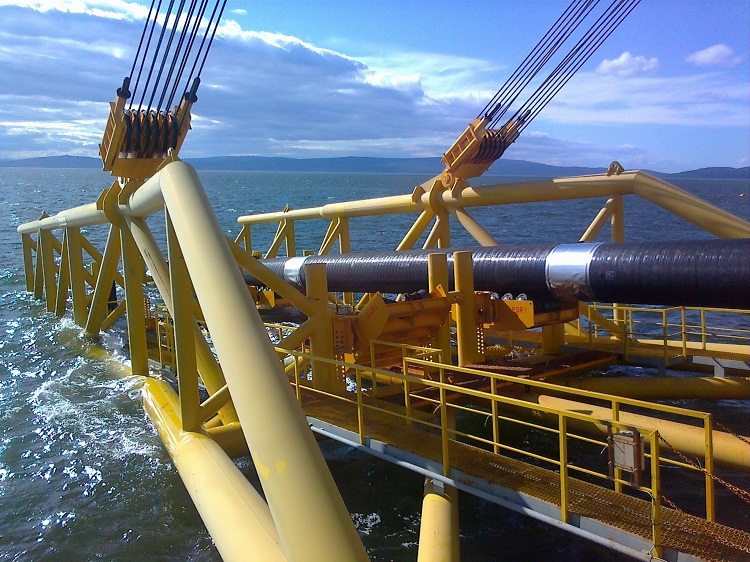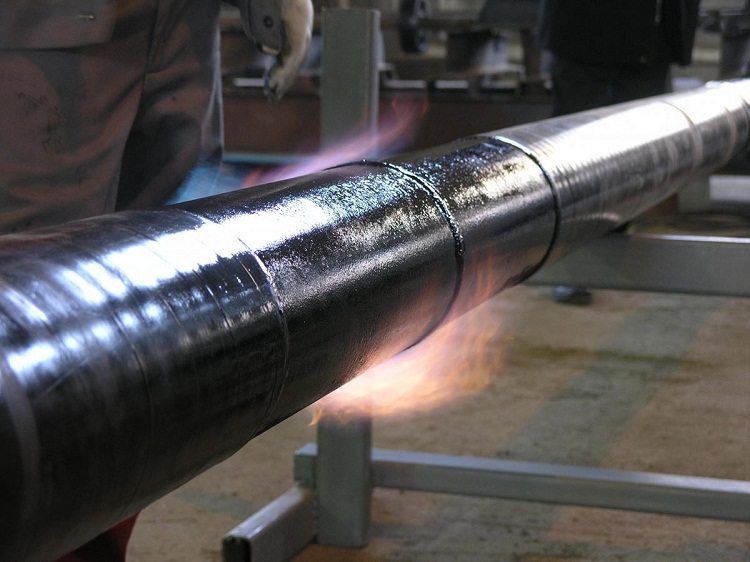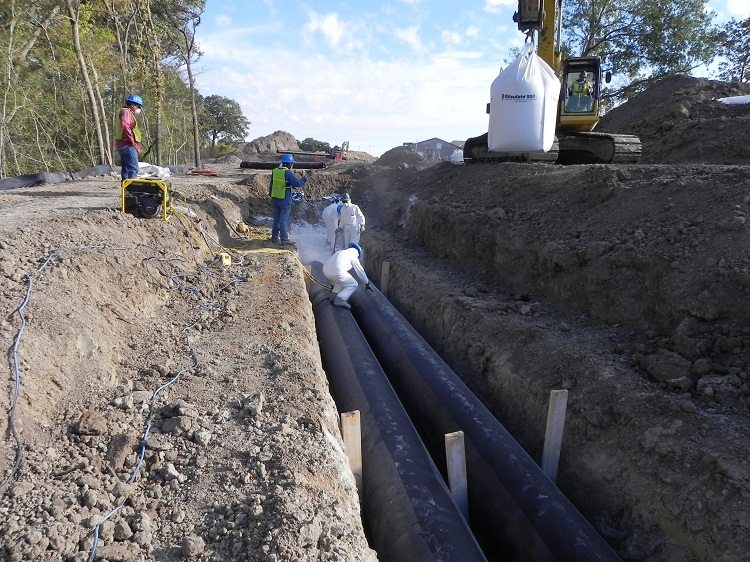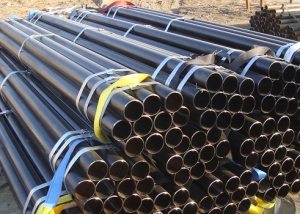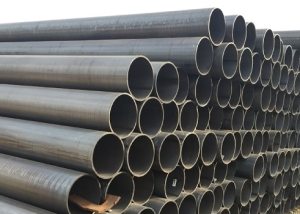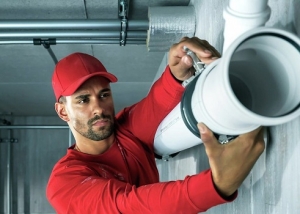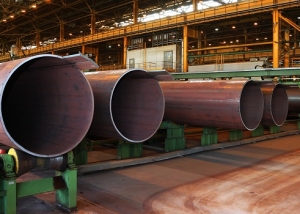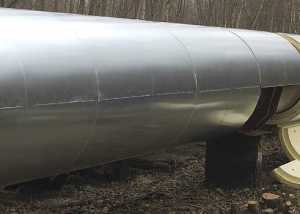Operation in an aggressive environment necessitates additional protection for metal pipes. The solution is VUS isolation (very reinforced), which reduces the negative effects of stray currents and soil corrosion. Steel pipe with WCS is produced according to the requirements of state standards in the factory. Insulation is based on the application of two or three outer layers of extruded polyethylene. This significantly increases the durability and mechanical strength of the product.
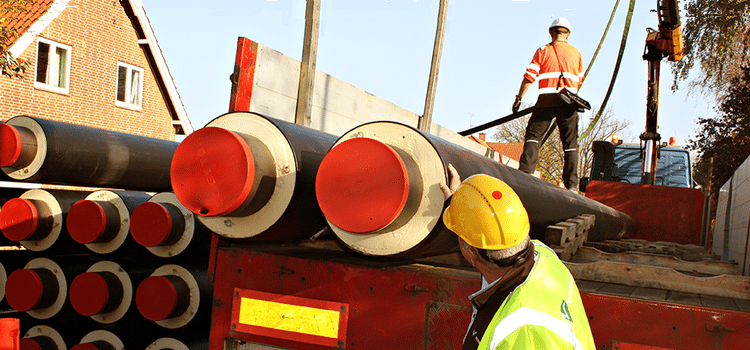
For the installation of pipelines operating in extreme conditions, pipes in reinforced insulation are used
Content
The main applications of VUS pipe insulation
Insulation coating of metal products is designed to minimize the negative impact of water and atmospheric factors. The application of highly reinforced insulation is justified for pipes that can withstand severe loads and high pressures. Most often, an insulated pipe of this type is used:
- in oil pipelines of various capacities;
- for utilities in water supply and sanitation;
- for the protection of underground pipelines under highways or ponds, as well as at their intersection with landfills of garbage, slag or industrial effluents;
- in gas distribution complexes with a load of not more than 2.5 MPa;
- when laying linear sections of gas pipelines near sewers, tram and railways. An important condition: the pressure in the gas pipeline should not exceed 5.5 MPa.
A pipe with a coating of polyethylene can be used both for protection against the action of water and chemically aggressive liquids in industry, and for private construction. Insulation can be applied in 2 or 3 layers, so the thickness of the coating varies from 2 to 4 mm. The cost depends on both the number of layers and the wall thickness and the diameter of the insulated pipe. The type of insulation coating is determined at the design stage.
Note! The upper limit of the carrier temperature, which is allowed to be transported through such pipes, is + 60 ° С.
Benefits of Insulating Extruded Polyethylene Pipes
Polyethylene insulation is widespread due to improved performance compared to applying bitumen mastics and polymer tapes. The main advantages of pipe insulation are very reinforced type:
- Increased resistance to mechanical damage. Damage to the coating is possible by impact with a weight of more than 2.1 kg.
- High and stable over time adhesion to metal (35 N / cm and above).
- Low degree of permeability and water absorption.
- Good dielectric properties (over 5 kV).
- Long life without emergency repairs and pipe replacement (40 years or more).
- Laying pipes in direct contact with water.
- Operation in extreme conditions in the temperature range from plus 50 ° C to minus 60 ° C.
- High transient resistance, increasing efficiency with cathodic protection.
- Reducing the cost of heat loss by up to 30% due to high thermal insulation.
To date, a very reinforced insulation can be called the most effective way of corrosion protection of pipelines. This fact determines the application of this method in all civilized countries. Given the best operational characteristics, the higher price of VUS pipes in comparison with analogues is fully justified.
Highly Insulated Pipe Technology
The basis of production in the factory is the method of flat-gap extrusion. Regardless of the number of layers, the pipe surface is initially prepared. It is heated and passed through a shot blasting machine to remove rust and oxides. This procedure gives the surface the roughness necessary for adhesion.
After cleaning from residual fractions, the pipe passes the control of dust removal and roughness. The quality of dedusting is determined using adhesive tape and compared with a reference value. Dust residues reduce the adhesion of the insulation to the pipe, and impair corrosion resistance. A special meter determines the degree of roughness.
Important! A pipe with a three-layer WCS provides the greatest degree of corrosion protection.
According to the technology, the further sequence of operations in the production of pipes with three-layer insulation is as follows: at the first stage, the steel pipe is heated to 200 degrees and a primer is applied to its surface (primer). Primer - primer on a solvent, the drying rate of which is 15 minutes. This primary layer fills in minor cracks. The thickness of the deposited epoxy primer reaches an average of 0.6 mm.
The next intermediate layer consists of an adhesive adhesive composition, which is usually used sevilen. Its purpose is to securely fasten the primer and the outer plastic layer. The last stage of isolation is a coating with a polyethylene treated with a primer and adhesive base. The material is extruded through the gap between the plates of a flat-slot extruder. This method ensures the same distribution of the insulation coating over the metal surface. Reinforced insulation is also applied to various parts of pipelines: transitions, ball valves, bends and tees.
When applying a two-layer polyethylene coating, an epoxy primer is not applied. The surface cleaned and heated by induction is immediately coated with adhesive adhesive and the outer layer of polyethylene. Further, in the technological process, the protective coating is cooled, the ends of the steel pipe are cleaned from insulation by about 15 mm, and the chamfer is cleaned. All products pass quality control (coating thickness and bevel angle are checked), marked and transported to the warehouse.
Differences and normative composition of reinforced and VUS isolation
Extruded polyethylene insulation is divided into two types: reinforced and highly reinforced. When planning the type of insulation, it is necessary to take into account the amount of electrical resistance of the soil around the pipeline. With a specific resistance in the range of 10 to 20 Ohm · m, reinforced pipe insulation is used. When laying in soil with high corrosiveness (up to 10 Ohm · m), maximum protection should be chosen.
The standard composition and thickness of the layers of reinforced and CCC insulation are presented in table No. 1.
Table 1
| Type of coating | Insulation composition | External product size, mm | Minimum total layer, mm |
| CSS
(GOST RF "Steel main pipelines. General requirements for corrosion protection") |
0.06–0.08 mm thick epoxy primer
Adhesive copolymer sublayer with a minimum thickness of 0.3 mm Polyethylene sheath |
from 42 to 273 | 2,0 |
| from 273 to 530 | 2,2 | ||
| up to 720 | 2,5 | ||
| CSS
(Standards GOST 9.602–89 "ESZKS. Underground structures. General requirements for protection against corrosion)
|
from 42 to 100 | 1,5 | |
| from 103 to 250 | 2,0 | ||
| from 273 to 720 | 2,5 | ||
| VUS
GOST 9.602–89 |
Similar to reinforced | from 42 to 250 | 2,5
|
| from 273 to 530 | 3,0 | ||
| up to 720 | 3,5 |
In accordance with state standards, the thickness of the insulating layer at WCS should be greater than with reinforced coating. The diameter of the steel metal is the same for both types and ranges from 42 to 720 mm. For highly reinforced protection in the context, the total layer is 2.5-3.0 mm, for reinforced protection, the value of the layer varies from 1.5 to 2.5 mm.
A pipe with corrosion protection made of polyethylene meets all modern requirements for laying underground and surface pipelines. The coating in the factory allows you to control the quality of its performance and guarantee a long service life. VUS coating is the best option for the ratio of costs, effectiveness and durability of protection.
